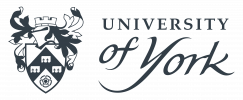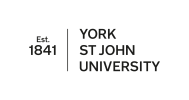© Pint of Science, 2025. All rights reserved.
Is the quantum world really as "Spooky" as Einstein originally suggested?
John O'Brien
(PhD Student)
I wish to create intrigue and interest in quantum mechanics as it has a reputation for being very difficult and hard to understand. My aim is to try and dispel some of this misrepresentation by showing people some of the history, some of the more accessible side and a few recent discoveries that have been made. I will look at the origin of quantum mechanics and the history of the Copenhagen institute. I then move on to discuss more recent work such as quantum uncertainty with macro crystals. Finally I round out by prompting the listeners to look further into any part that interests them.
AI & Space Research: A wild ride
Frank Soboczenski
(Assistant Professor in Computer Science (Artificial Intelligence))
This talk will present state-of-the-art AI research projects in space science, ranging from detecting new life on extra-solar planets, finding resources on the lunar surface, monitoring astronauts health, classifying solar events, investigating radiation effects on humans in space and using quantum machine learning on cubesats.
A 'sweet' new strategy to tackle superbugs
Abby Walklett
(PhD Student)
Antibiotic resistance is one of the biggest threats that mankind face. It is projected that by 2050, tens of millions more people will die from bacterial infections that we can currently treat due to bacteria gaining resistance to our current commercially available antibiotics. Terrifyingly, pan-resistant (meaning resistant to every single antibiotic modern medicine can offer) strains of a specific bacteria, Acinetobacter baumannii, have been identified. However, all hope is not lost! Fortunately, there are a number of ways we can tackle the antibiotic resistance crisis. One way is to investigate the cell-surface molecules that bacteria employ to escape detection by our immune system via an "invisibility cloak" mode of action. In my research, we have discovered the first bacterial enzyme that attaches one of these "invisibility cloak" molecules, called pseudaminic acid (Pse), to the surface of a harmful strain of A. baumannii, and we have established a new enzyme family. I endeavour to fully characterise this enzyme, and other Pse-utilising enzymes, to understand precisely how these enzymes work so that we can design new antibiotics that target this immune-evading sugar.
Map data © OpenStreetMap contributors.

